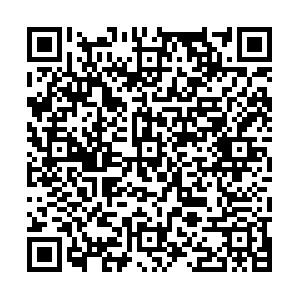| [1] |
MATTHIESSEN C M I M. Applying systemic functional linguistics in healthcare contexts [J]. Text & Talk,2013,33(4-5):437-466.
|
| [2] |
SLADE D,MANIDIS M,MCGREGOR J, et al. Communicating in Hospital Emergency Departments [M]. Heidelberg:Springer,2015.
|
| [3] |
MORGAN M. The doctor–patient relationship [C]// SURBONE A,ZWITTER M,RAGER M, et al. Sociology as Applied to Medicine. New York:Springer,2008:55-70.
|
| [4] |
VON FRIEDERICHES-FITZWATER M M & GILUN J. Relational control in physician-patient encounters [J]. Health Communication,2001,13(1):75-87. doi: 10.1207/S15327027HC1301_07
|
| [5] |
PARSONS T. The Social System [M]. Glencoe:The Free Press,1951.
|
| [6] |
CHARLES C,WHELAN T & GAFNI A. What do we mean by partnership in making decisions about treatment? [J]. BMJ,1999,319(7212):780-782. doi: 10.1136/bmj.319.7212.780
|
| [7] |
AGGARWAL N & ROWE M. Denial in Patient–Physician Communication among Patients with Cancer [C]// SURBONE A,ZWITTER M,RAJER M, et al. New Challenges in Communication with Cancer Patients. New York:Springer,2013:15-25.
|
| [8] |
O’HAIR D,VILLAGRAN M,WITTENBER E,et al. Cancer survivorship and agency model:implications for patient choice,decision making,and influence [J]. Health Communication,2003,15(2):193-202. doi: 10.1207/S15327027HC1502_7
|
| [9] |
BLANK T,GRAVES K,SEPUCHA K,et al. Understanding treatment decision making:contexts,commonalities,complexities,and challenges [J]. Annals of Behavioral Medicine,2006,32(3):211-217. doi: 10.1207/s15324796abm3203_6
|
| [10] |
SURBONE A. From truth telling to truth in the making:a paradigm shift in communication with cancer patients [C]// SURBONE A,ZWITTER M,RAJER M, et al. New Challenges in Communication with Cancer Patients. New York:Springer,2013:3-13.
|
| [11] |
DIE TRILL M. Physicians’ emotions in the cancer setting:a basic guide to improving well-being and doctor-patient communication [C]// SURBONE A,ZWITTER M,RAJER M, et al. New Challenges in Communication with Cancer Patients. New York:Springer,2013:217-229.
|
| [12] |
SCAMBLER G. Sociology as Applied to Medicine (6th ed.) [M]. Edinburgh,New York:Saunders/Elsevier,2008.
|
| [13] |
HALLIDAY M A K. Applied linguistics as an evolving theme [C]// WEBSTER J. Language and Education (Collected Works of M. A. K. Halliday 9). London:Continuum,2007:1–19.
|
| [14] |
黄国文. 什么是系统功能语言学[J]. 北京科技大学学报(社会科学版),2023,39(1):73-89.
|
| [15] |
HALLIDAY M A K. On the grammar of pain [J]. Functions of Language,1998,5:1-32. doi: 10.1075/fol.5.1.02hal
|
| [16] |
MALINOWSKI B. A Scientific Theory of Culture and Other Essays [M]. Chapel Hill:University of North Carolina Press,1944.
|
| [17] |
SLADE D,SCHEERES H,MANIDIS M,et al. Emergency communication:the discursive challenges facing emergency clinicians and patients in hospital emergency departments [J]. Discourse & Communi cation,2008,2(3):289-316.
|
| [18] |
SLADE D,CHANDLER E,PUN J,et al. Effective healthcare worker-patient communication in Hong Kong accident and emergency departments [J]. Hong Kong Journal of Emergency Medicine,2015,22(2):69-83. doi: 10.1177/102490791502200201
|
| [19] |
SLADE D,RIDER E,PUN J,et al. The international research centre for communication in healthcare (IRCCH):interprofessional,multicultural approaches to healthcare communication challenges [J]. Journal of Interprofessional Education & Practice,2015,1(2):67-67.
|
| [20] |
SLADE D,MATTHIESSEN C M I M,LOCK G, et al. Patterns of interaction in doctor-patient communication and their impact on health outcomes [C]// Georgetown University Round Table on Languages and Linguistics,2016:235-254.
|
| [21] |
CHANDLER E,SLADE D,PUN J,et al. Communication in Hong Kong accident and emergency departments:the clinicians’ perspective [J]. Global Qualitative Nursing Research,2015,2:69-83.
|
| [22] |
PUN J,MATTHIESSEN C M I M,MURRAY K A,et al. Factors affecting communication in emergency departments:Doctors and nurses’ perceptions of communication in a trilingual ED in Hong Kong [J]. International Journal of Emergency Medicine,2015,8(1):1-12. doi: 10.1186/s12245-014-0049-9
|
| [23] |
PUN J,MATTHIESSEN C M I M,WILLIAM G,et al. Using ethnographic discourse analysis to understand doctor-patient interactions in clinical settings [J]. Sage Research Methods Cases Part 2,2017,1:1-19.
|
| [24] |
MARTIN J R. English Text:System and Structure [M]. Beijing:Peking University Press,2004.
|
| [25] |
MARTIN J & ROSE D. Genre Relations:Mapping Culture [M]. London:Equinox,2008.
|
| [26] |
SWALES J. Genre Analysis:English in Academic and Research Settings [M]. Cambridge:Cambridge University Press,1990.
|
| [27] |
HALLIDAY M A K. Working with meaning:towards an appliable linguistics [C] // WEBSTER J. Meaning in Context:Implementing Intelligent Applications of Language Studies. London:Continuum,2008:7-23.
|
| [28] |
HUANG Q,PUN J & HUANG S. Using a mixed-methods needs analysis to ensure the sustainability and success of English for nursing communication courses:improving nurse-patient engagement practices in globalized health care [J]. Sustainability,2022,14:1-22.
|
| [29] |
HUANG Q & PUN J. Views of hospital nurses and nursing students on nursing engagement – bridging the gap through communication courses [J]. Frontiers in Psychology,2022,13:915147. doi: 10.3389/fpsyg.2022.915147
|
| [30] |
EGGINS S & SLADE D. Clinical handover as an interactive event:informational and interactional communication strategies in effective shift-change handovers [J]. Communication Medicine,2012,9(3):215.
|
| [31] |
EGGINS S & SLADE D. Communication in clinical handover:improving the safety and quality of the patient experience [J]. Journal of Public Health Research,2015,4:666.
|
| [32] |
EGGINS S,SLADE D & GEDDS F. Effective communication in clinical handover:From research to practice [M]. From Research to Practice,Berlin:DeGruyter,2016.
|
| [33] |
SLADE D,PUN J,MURRY K A,et al. Benefits of health care communication training for nurses conducting bedside handovers:An Australian hospital case study [J]. The Journal of Continuing Education in Nursing,2018,49(7):329-336. doi: 10.3928/00220124-20180613-09
|
| [34] |
PUN J,CHAN A,EGGINS S,et al. Training in communication and interaction during shift-to-shift nursing handovers in a bilingual hospital:A case study [J]. Nurse Education Today,2020,84:1-9.
|

 点击查看大图
点击查看大图



 下载:
下载:
